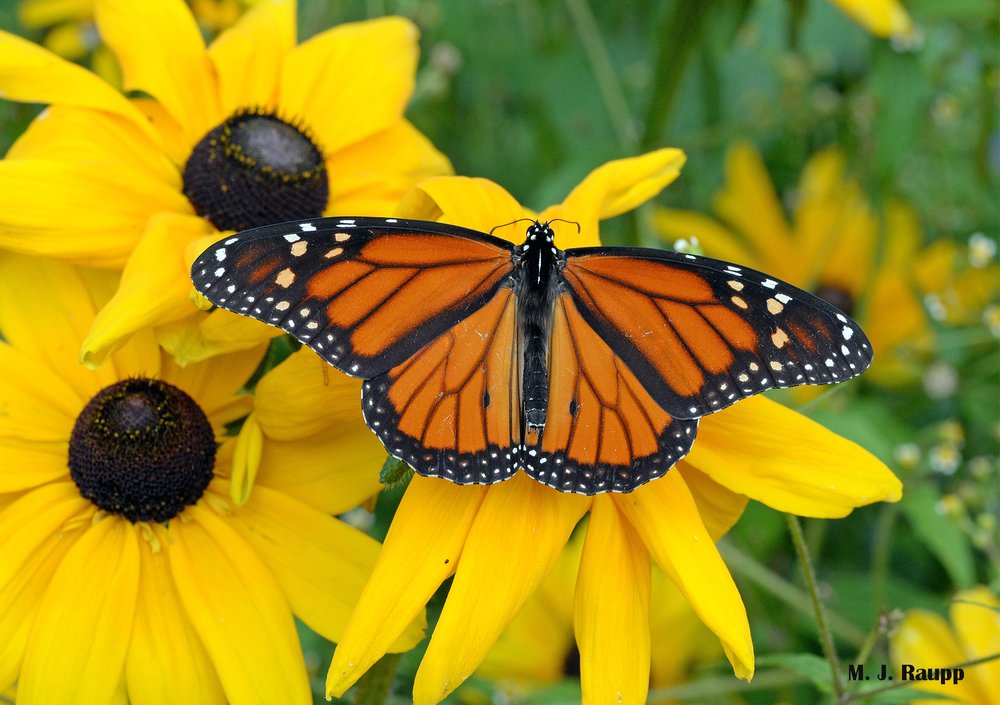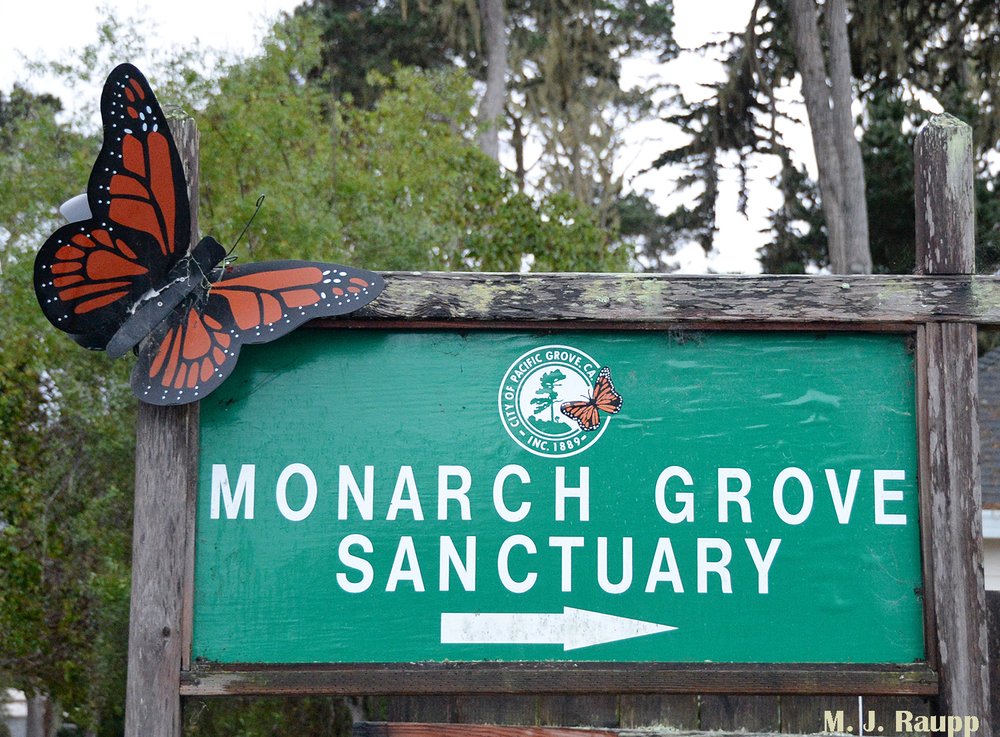Some great news for western migratory Monarch butterflies, Danaus plexippus

Some good news as western monarch butterflies make a comeback in the winter of 2021-2022.
Last August we recapped some dire news concerning the plight of migratory monarch butterflies, particularly the scary decline of monarchs on the west coast of the US. In 2014, Bug of the Week communed with thousands of western monarchs in Pacific Grove, CA, also known as “Butterfly Town, USA”. Six years later in 2020, the annual winter monarch count in the west plunged from tens of thousands to a shocking 1,914, a decline of more than 99.9% from historic levels. Many believed it might be too late to save the western migratory monarchs. Attempts to have monarchs declared an endangered species by the US Fish and Wildlife Service failed in December of 2020 as resources were needed to focus on “higher-priority listing actions” according to agency officials. In a remarkable and not fully understood turnabout, populations of western monarchs have increased more than 100-fold to almost 250,000 overwintering butterflies reported in the current annual winter monarch census completed in January 2022. This is really encouraging news and Emma Pelton, conservation biologist with the Xerces Society, called the upswing “magnificent”.

In the winter of 2021-2022 the Monarch Sanctuary in Pacific Grove had an encouraging complement of 10,000 overwintering monarchs.
But what is behind this remarkable “bounce” in the western monarch population? Alissa Greenberg of NOVA provided a fascinating peek into possible explanations for this phenomenon in her interview with experts of monarch biology and ecology. Several potential hypotheses were advanced. Drs. Louie Yang and Art Shapiro of UC Davis and Elisabeth Crone of Tufts University propose that a series of “fortunate events” may have conspired in the spring and summer of 2021 to boost populations of monarchs throughout their range. These include a fortuitous match of the spring arrival of monarchs to high quality patches of milkweeds in peak condition to support the growth and development of monarch caterpillars. High food quality translates into higher survival of robust caterpillars that develop into fecund adults, which boost monarch populations. Dr. Shapiro adds that drought in the west may have reduced planting of many crops, thereby reducing attendant pesticide applications harmful to monarch butterflies and their young. An additional hypothesis advanced by entomologists and conservation biologists posits a population supplement of migratory butterflies as urban and suburban monarchs spawned on milkweeds planted by butterfly enthusiasts joined those from natural and rural settings. Yet another possibility advances the notion that some peripatetic monarchs from the larger eastern migration hopped across the country to join their western counterparts. As author Greenberg points out, further research is needed to confirm or infirm these ideas and it is likely that several mechanisms acting in concert underlie this remarkable “bounce” in populations of western migratory monarchs.
Along the California coast monarchs cluster on pine branches and rest during cool, moist mornings. As the morning mist clears, monarchs bask in the mid-day sun to warm their bodies. By afternoon with flight muscles sufficiently warmed, they take wing to visit nearby blossoms. In 2014 when these monarchs were filmed in Pacific Grove, western monarch populations were similar to those in the winter of 2021-2022. This spring why not plant some milkweeds to feed monarch caterpillars? Milkweeds also provide a nectar source for adults.
So, what can be done to help save these unique and charismatic migratory creatures? Globally, mitigating climate change, reducing unnecessary pesticide use, and conserving resources and habitats for wildlife will help. Locally, providing milkweeds for monarch caterpillars and nectar plants for adults can facilitate reproduction and survival of monarchs. Regional references for milkweed plants can be found at this link https://xerces.org/milkweed and references for monarch nectar plants can be found at this link https://xerces.org/monarchs/monarch-nectar-plant-guides For great tips to create your homegrown monarch habitat, click on this excellent story about University of Kentucky entomologists Adam Baker and Dan Potter, who evaluated several elements of garden design to better support the needs of monarchs: https://news.ca.uky.edu/article/uk-research-shows-how-build-more-effective-monarch-butterfly-gardens
Be sure to consult a reference to learn what milkweeds work well in your geographic region. Here in Maryland, species including common milkweed, Asclepias syriaca, swamp milkweed, Asclepias incarnata, and butterfly weed, Asclepias tuberosa, are good choices. In the waning weeks of winter, monarchs will depart their winter redoubts on the west coast and abandon the montane fir forests of Mexico to begin their long journeys northward. With days getting longer, it is time to plan your gardens and include appropriate milkweeds and nectar plants to support the monarchs. We have a role to play in conserving these remarkable wanderers.
Acknowledgements
Please visit the excellent story by Alissa Greenberg of NOVA to learn more about the renaissance of western monarchs at this link: https://www.pbs.org/wgbh/nova/article/western-monarch-population-growth-2021/
To learn more about monarchs, their migrations and perils, and how to conserve them, please visit the following websites:
https://xerces.org/monarchs/western-monarch-conservation
https://xerces.org/monarchs/eastern-monarch-conservation
https://xerces.org/blog/monarch-numbers-from-mexico-point-to-declining-population
https://www.nationalgeographic.com/animals/article/monarch-butterflies-near-extinction
http://www.monarchwatch.org/index.html
This post appeared first on Bug of the Week